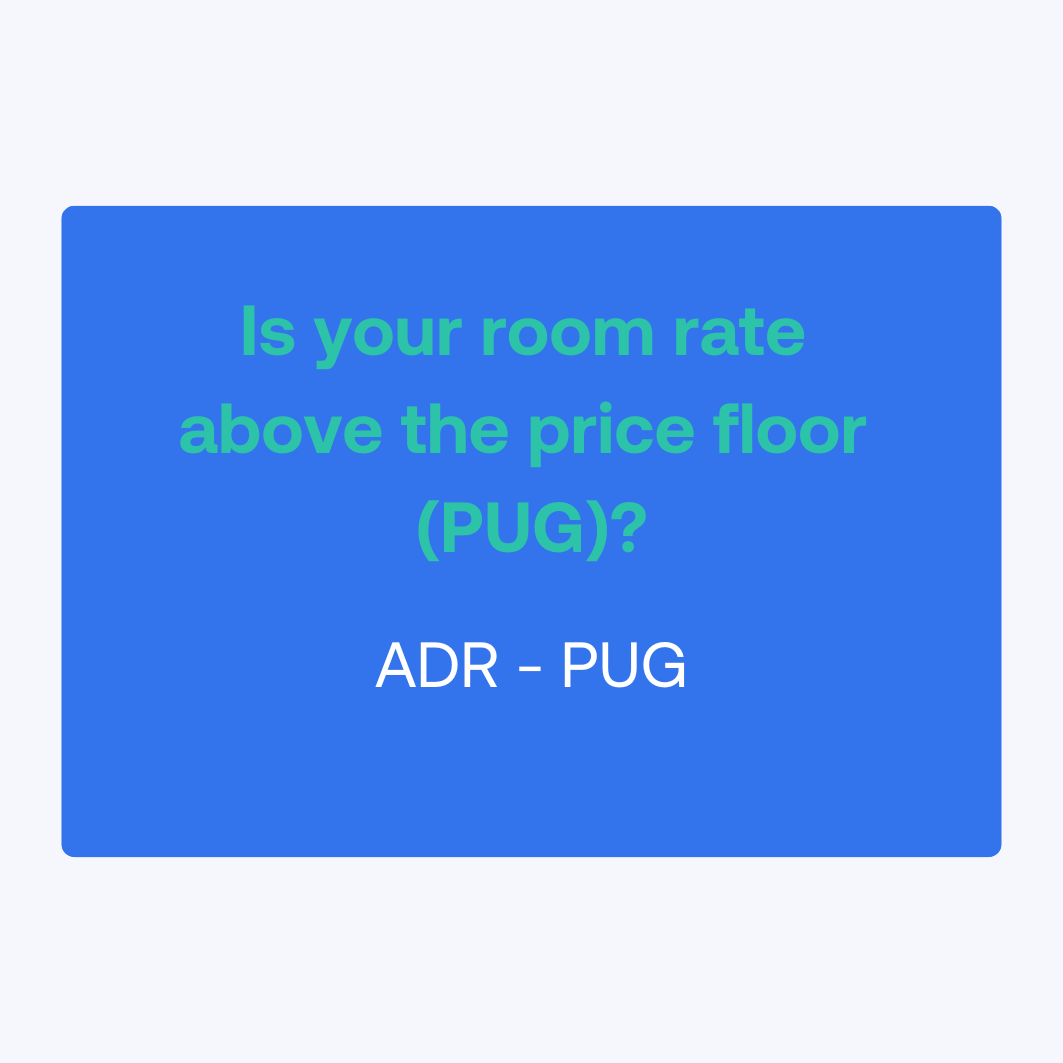Room rate calculation
in the hotel industry
Calculate your room rates and calculate your price floor for maximum success. Download our CSV template now for free.


What is behind the calculation?
The goal of room rate calculation is to determine the necessary average room price.
But in practice, pricing decisions are often based on gut feeling rather than data.
👉 If your prices are too high, your rooms stay empty.
👉 If they’re too low, you miss out on valuable revenue.
No more guesswork: happyhotel uses real-time data and smart algorithms to automatically find the optimal price for your hotel – every single day.

Download free calculation template ⬇️
What do you need to calculate the room rate?
In order to carry out a correct room rate calculation in the hotel industry, you need the following data and key figures:
Everything you need:
✓ Your planned occupancy rate
✓ Fixed and variable costs
✓ Your desired profit
✓ Your price floor (PUG)
✓ Your average daily rate (ADR)

How to calculate the room rate
To calculate your room rate, you simply have to do the following:
1. Calculation of ADR
The Average Daily Rate (ADR) is the average hotel room rate achieved in one day. To do this, you need all the revenue you've earned.
You sold a total of 8 rooms for 95€ (760€) over your entire OTAs on 22/11/2019. In addition, you had 15 bookings worth 85€ (1275€) via your website. Your total daily turnover was 760€ + 1275€ = 2035€.
The total turnover is now divided by the number of bookings 8 + 15 = 23:2035€/23 bookings = 88.48€.
The average ADR rate was therefore €88.48.

2. PUG calculation
When calculating your room rate, it's essential to make sure it's above your price floor (PUG).
Here’s how to calculate it step by step:
Example
Fixed costs: €1,900,000
Number of rooms: 150
Average occupancy rate: 70%
Annual sold room nights:
150 rooms × 365 days × 0.7 = 38,325
Fixed costs per room:
Total fixed costs ÷ sold room nights
€1,900,000 ÷ 38,325 = €49.57
Variable costs per room:
Total variable costs ÷ sold room nights
€1,250,000 ÷ 38,325 = €32.61
Price floor (PUG):
Fixed costs per room + variable costs per room
€49.57 + €32.61 = €82.18
.png)
3. Compare ADR to PUG
The ADR in our example from 22.11.2019 was €88.48. The PUG is €82.18. The room rate is therefore 6.29€ above the lower price limit. The price floor is important to know in order to cover costs. But the value alone is not the only decisive factor. The LTV (lifetime value) should be considered. It states how much revenue a customer generates over their entire lifetime. A regular customer comes several times and therefore the first booking may also be below the lower price limit.

Kostenlose Vorlage zur Kalkulation herunterladen ⬇️
How do room prices differ?
With happyhotel, there’s no need for manual price adjustments anymore!
Our software uses artificial intelligence (AI) to automatically adjust your room rates based on current market conditions.
🔍 How does it work?
Real-time data analysis:
Our AI continuously analyzes demand, seasonality, booking behavior, and other relevant factors.Learning algorithm:
With every booking, the system gets smarter through machine learning and adapts your pricing strategy to your hotel’s specific needs.
24/7 optimization:
Benefit from dynamic price recommendations around the clock – designed to maximize your revenue without any extra effort.
🎯 The result:
Always the best price for your hotel – automatic, precise, and profitable!

How do hoteliers calculate their room rates?
❌ Gut feeling instead of data: Intuitive decisions often lead to lost revenue.
❌ Prices too high: Don’t scare away potential guests.
❌ Prices too low: Avoid early sell-outs at dumping rates.
With happyhotel and its automated pricing system, these problems are a thing of the past!

That's how fast you lose profits
What makes happyhotel unique?
Hotels that use happyhotel increase their revenue by up to 30% – while also saving valuable time!
✓ Real-time data for precise calculations
✓ Automated price adjustments – no more manual errors
✓ Transparent dashboards – keep all key figures in view at all times

and convince yourself
Forget manual price adjustments in your hotel. With happyhotel, you can maximize your income without constantly checking prices.




